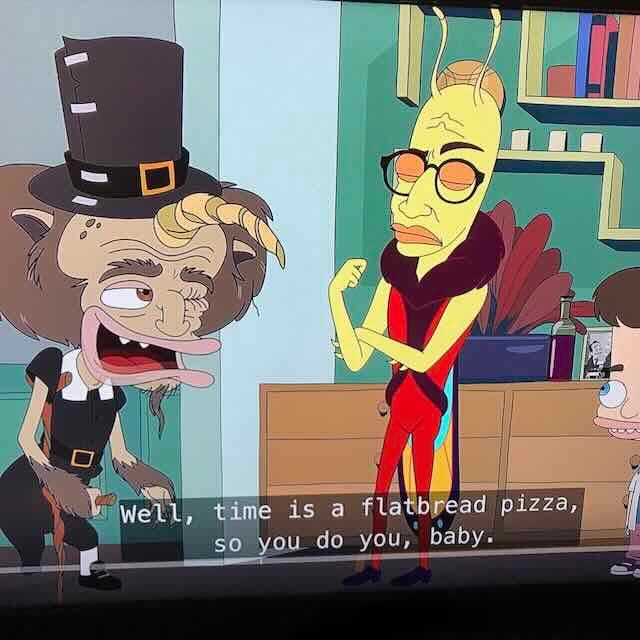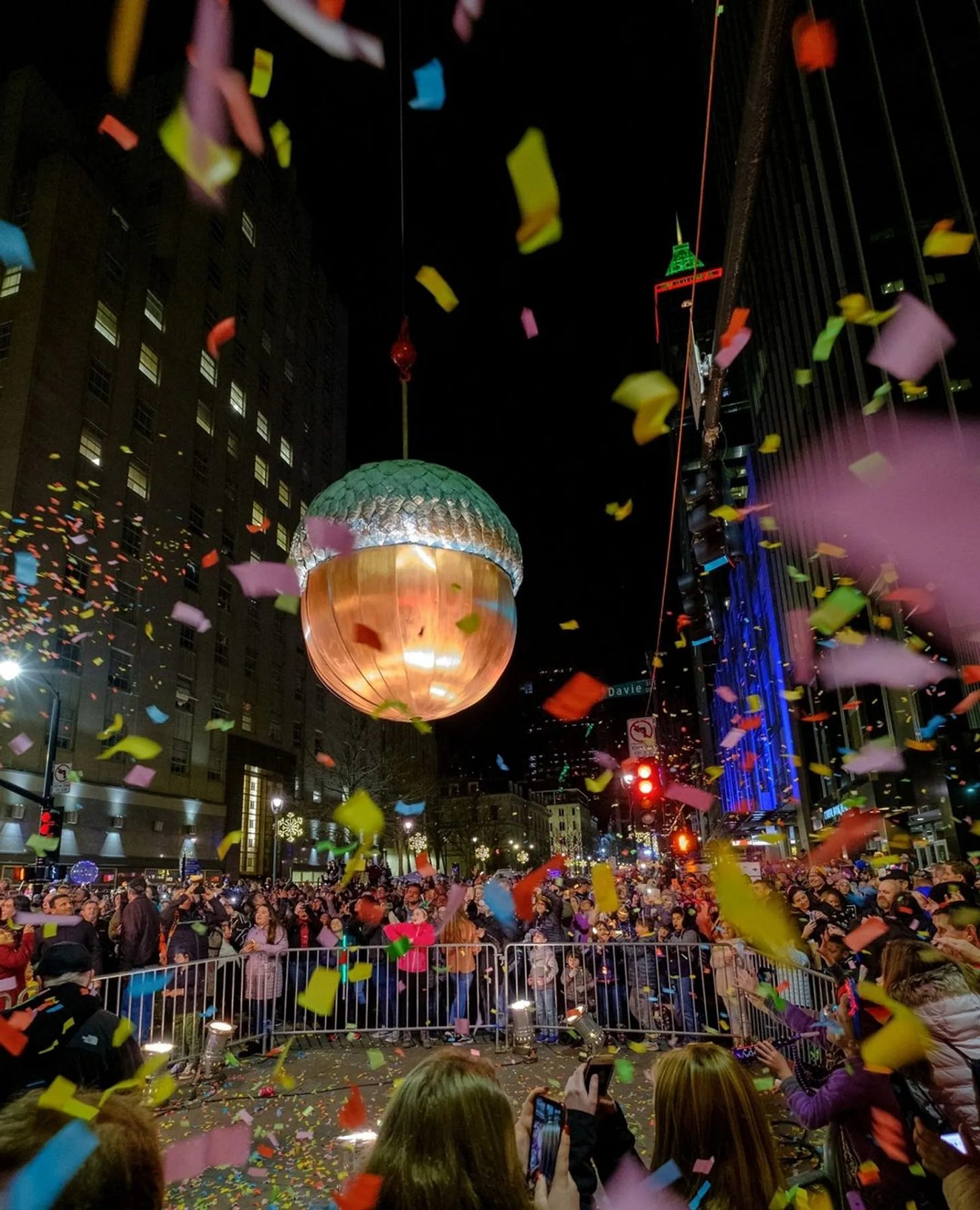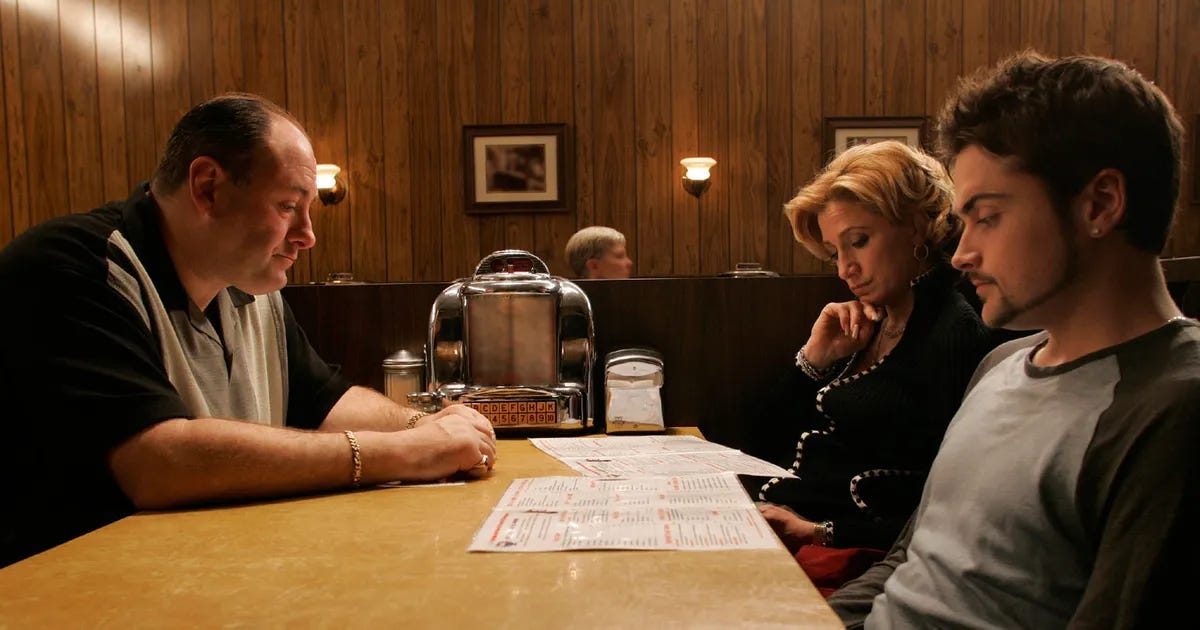For the last few weeks, I’ve been contemplating the last scene of my novel. I’ve already written my way through a few versions, starting with the happy ending, which I hear from a lot of writers is something we need to get out of our system. We want only good things for the characters we’ve spent so much time with—understanding, healing, forgiveness, and of course joy. But as soon as I finished writing the happy ending, I crinkled my nose as if at a bad smell, tore the pages out, and moved on.
For the second attempt, I let the pendulum swing the other way—I wrote the tragic ending, where every last thing completely falls apart and nobody emerges unscathed. This one felt wrong too.
One of the reasons I think endings are hard to write is because in real life, endings are mostly fake. Take, for example, New Year’s.
New Year’s is complete horseshit. Talk about fiction—the “change” we undergo from New Year’s Eve to New Year’s Day is totally made up. A new year? That’s just what the calendar says and by the way, we made calendars up. Clock time too. I could just as easily tell you that January 1st is the eleventy billionth day of Electric Boogaloo in the Year of our Goddess Fortuna Pax. Time is a flatbread pizza.
Every December 31 I reread this piece by Verlyn Klinkenbourg, which says roughly the same thing:
“Every horse has the same birthday, Jan. 1. Like all things calendrical, this is a human convention…I can report that the horses make no fuss about their common birthday or the coming of the new year. Tonight, like any other, they will be standing, dozing on their feet, ears tipping back and forth at the slightest of sounds.
What’s stupid about New Year’s is that it’s an external ending. It’s the world saying “something has changed!” But has it? From one day to the next, a totally different year, landscape?
And yet, if I think back over the whole year, something HAS changed in that time span. New Year’s puts a frame around a period of time and invites us to make meaning out of it. It’s artificial, but most endings are. Besides life’s few definite endings—graduation, retirement, moving, and of course, death!—the rest of the lines in the sand are arbitrarily drawn.
And yet we draw them because our brains are designed to create story. We’re programmed to take the big mush of life and break it down in some way. That’s why we invented calendars and clocks and those giant glasses people at Times Square wear for the ball drop.
So if most endings are artificial, how do we make one up that feels real?
Here’s John Yorke (a British TV exec who also teaches narrative) on endings, from his book Into the Woods. He makes a useful distinction between the climax, where the external storyline peaks, and the resolution, a quieter moment soon after the climax.
“The climax is the stage at which the protagonist finds release from their seemingly inescapable predicament. It’s the final showdown…the battle in which the hero engages with their dramatic need and overcomes their flaw…the inciting incident provokes the question ‘What will happen’ and the climax declares ‘this’.”
The resolution…is where it is all brought to light, feelings are finally expressed…the knots of plot are undone and complications unravelled. It is also a tying up of a loose ends…no strand left unattended or forgotten.
To get to our endings, we need to know how the external storyline resolves (does he beat the bad guy or not?) and how our protagonist perceives their own evolution.
This is why the happy ending and the tragic ending don’t work in most stories. Neither accurately describes how the characters have changed and what choices they’d make as a result of those changes. Simply put, the internal and external don’t match.
So I went for a third ending, what I call the Sopranos ending, because of the series’ widely discussed final scene. It’s worth a watch, to see how so much tension is built in a small space. In the scene the family gathers at a diner for dinner. It’s a slow build—Tony arrives first, looks around, sits down, flips through the jukebox—lots of little, weighty movements building tension. Then Journey’s Don’t Stop Believin’ starts in the background, and the tension ramps up more. His wife arrives, then his son. They talk about small and big things (“Isn’t that what you said—try to remember the times that are good?”). The scene is weighed down by Tony’s fear that somebody is going to get him. The music gets louder. His daughter pulls up outside the restaurant, struggles to park her car, then hurries across the street to the entrance. We hear the door jangle as she enters and then the scene abruptly ends, cutting to black.
The ending is ambiguous, leaving us space to draw our own conclusions about what happens next, but I think the focus on Tony’s anxiety is clear and meaningful. He seems to understand he’ll always have to worry about losing the people he loves. And the extra bonus of that ending is that although most of us aren’t mobsters, we know exactly how he feels.
The Sopranos ending I wrote for my book has the same basic elements. It’s an ensemble scene wherein the protagonist is surrounded by people she mostly doesn’t know, about to take a dramatic action the reader wants to see play out. Instead, I hold the camera on the protagonist, showing her internal state, and cut to black before the desired action unfolds, leaving the reader to imagine how exactly it played out.
Conceptually, this ending makes sense to me—it shows the protagonist’s progress, evoking the person she was at the beginning of the book and illustrating how she has become someone slightly different, with a different perspective and presence. This matters more than what happens next (which the reader has enough info to put together on their own). And it contains some ambiguity, which I think is a plus.
I’m a big fan of the both/and endings, ones that provide some resolution and clarity but also include uncertainty. Tidy endings feel hollow to me. All the humans I know are messy, and so are their outcomes (if you live in a perfect world, good on ya). In narrative, I crave the ambiguity we experience in real life.
Speaking of both/and, I don’t believe in ball drops or resolutions or fresh starts and I certainly don’t believe in luck, but I will make a pot of Hoppin’ John on New Year’s Day. Because both/and. Because endings are fake and time is too and also this is the world that we live in, this is where we make meaning. Here’s to more words in the new year or the eleventy billionth day of Electric Boogaloo in the Year of our Goddess Fortuna Pax or whatever you celebrate.








Loved all of this. "New Year’s puts a frame around a period of time and invites us to make meaning out of it. It’s artificial, but most endings are." Also, CONGRATS on finishing your draft and landing on an ending. I can't wait to read it!
One of my favorite posts of this fictitious year--informative and thought provoking. Can't wait to read that Sopranos ending! Congratulations! 🥳